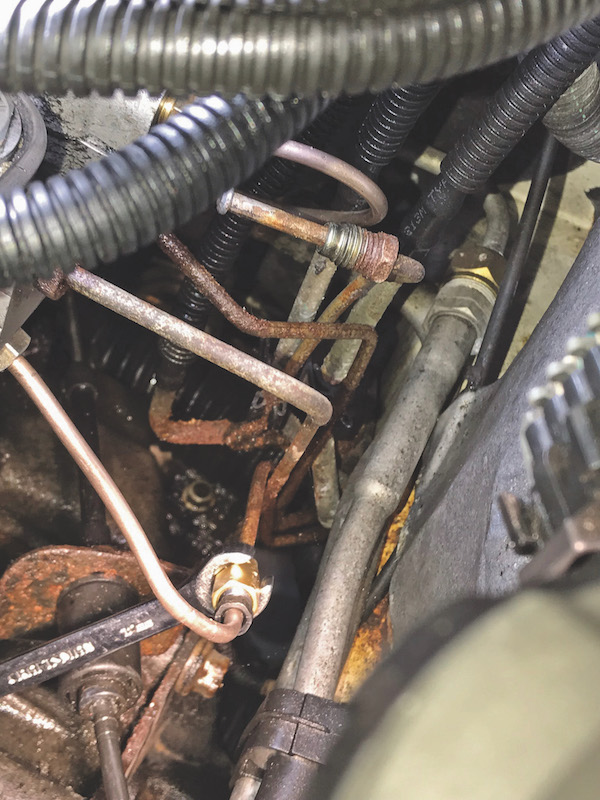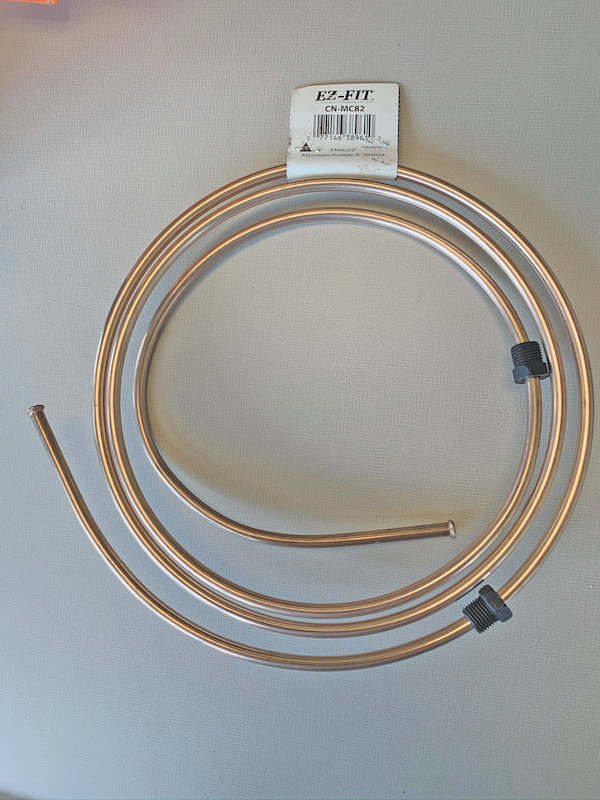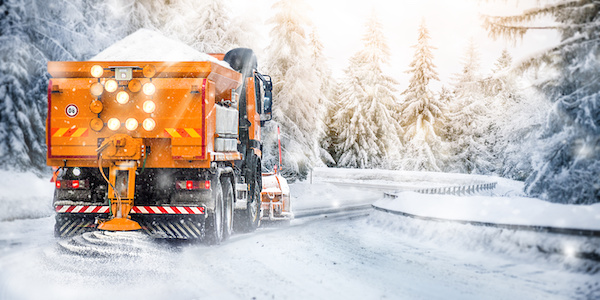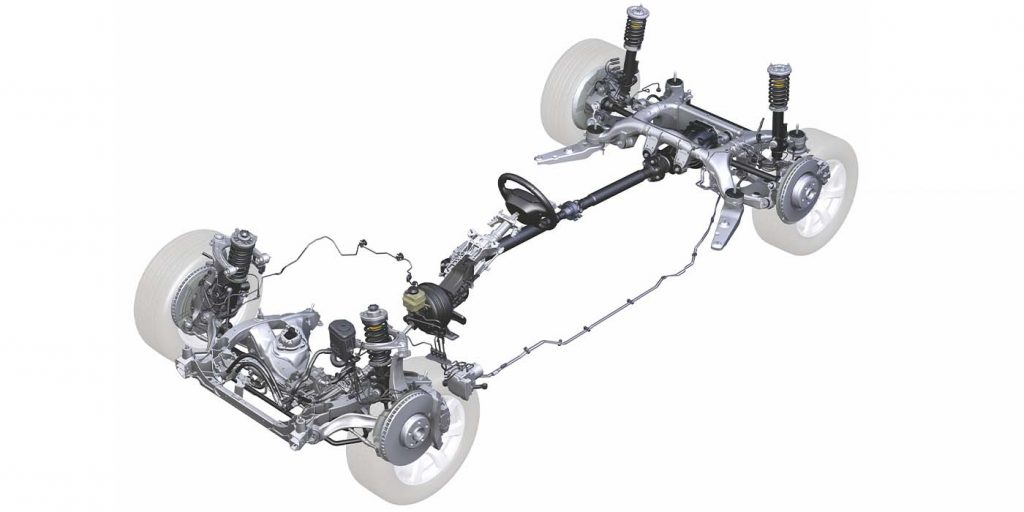Winter is typically the season when brake lines fail. Part of the blame can be put on corrosion. Some of the blame can be placed on the ABS and stability control system. When the isolation and dump valves open and shut, the change in pressure can cause stress on a hard brake line. These two factors lead to a leaking brake line.
Brake lines corrode both on the inside and outside. As the additive package that prevents rust and controls the pH of the fluid breaks down in the interior of the line, the copper brazing that coats the inside of the line dissolves. On the outside, debris and de-icers take their toll on the exposed surfaces.
Automakers use galvanization and plastic coatings on steel lines to stop brake line corrosion. But these barriers can’t prevent corrosion if they are sandblasted away by road debris kicked up by the tires. To protect the lines, many automakers are covering the underside of the vehicle’s plastic panels that protect the lines under the vehicle. But, even if the lines are protected, it does not mean they will not corrode.
Many municipalities are using brine solutions to pre-treat roads before winter storms. These solutions are called anti-icing treatments that stick to the road. These solutions can be less caustic than regular road salt, but they can stick to the underside of a vehicle longer and be more reactive when they get wet. This increases the brake lines’ exposure to corrosive elements.
Now, for the big debate, what should you use to replace brake lines? The answer is complicated, and every solution has its advantages depending on the vehicle.

Direct replacement lines are an option that works great on popular vehicles with known problems. But, on less popular, import nameplate vehicles, this might not be an option due to availability and price.
If you have to fabricate your brake lines, there are many options. Tubing options include mild-steel tubing, stainless steel and tubing made of nickel-copper alloys.
Mild steel tubing has been around for decades. Improvements have been made to the protective layers on the outside of the lines. New coatings can resist abrasions and prevent corrosion. You can purchase coils of tubing, or you can buy lengths with fittings and flares on the ends.
Stainless steel tubing is available, but it is not very easy to bend and flare. But for some show cars, the customer might demand it. For daily drivers, stainless steel is overkill.
The third option is tubing made with nickel/copper alloys. The two advantages of this type of tubing are it is easy to bend and is corrosion resistant. The tubing is so soft, and it can be bent into position on the vehicle. You can route the lines around fuel tanks and subframes before forming it into the final position. The softness of nickel/copper materials makes it very easy to flare.
You can purchase coils of the tubing and pre-flared lengths. Some companies offer sets of pre-flared lines made from nickel/copper that can replace the brake lines on a vehicle.

Rules Of Replacing Brake Lines
1.
Don’t skimp on flaring, bending and cutting tools: New tools are on the market that can flare a line while you have one hand tied behind your back. More expensive bending tools allow you to make bends tighter and closer to the fittings without deforming the line. Better tools will not only save time; they will save raw line and fittings.
2.
Look how the car is built: On some cars, the front and rear suspensions are on subframes. In most cases, the brake lines installed on the unibody and the subframes are attached. This can create problems if the brake or fuel lines need to be replaced. In the days of ridged lines, you might have had to remove the subframe, but more flexible tubing is now available that can be formed in place and routed to the attachment points.

3.
Replace as much of the line as possible: Splicing together corroded line does not work in most cases and replacing just the leaking section will result in a comeback. The best practice is to replace the hard line from the wheel well to an undamaged line. On vehicles with coated line, find the area where the coating is still intact.
4.
A flare is a precision device: Never take a flare for granted. To seal brake lines against 2,000 psi takes some geometry. The male and female surfaces of the fitting are three to five degrees different between the sealing surfaces. In some cases, the flare is designed to crush or compress onto the surface to form a seal, and the tolerances can stack up quickly against you. An off-center cut combined with a poorly clamped line may look fine to the naked eye, but the connection may leak when it is compressed by the fitting.
5.
Use new fittings: You can remove the fittings from the old line and reuse them on the new line, but it is a better practice to use new fittings. The old fittings can be cracked or corroded, and the threads could be damaged.
6.
Lubricate your flaring dies: Flaring dies can become damaged if they are not lubricated. This can create flares that can’t seal. If a die or other part of the tool is damaged, get rid of it.

7.
You might need a scan tool: If you install new brake lines on a modern ABS-equipped vehicle, you will need a scan tool to bleed the brakes. Air bubbles in the system can occur in the modulator body if the system has lost all of its brake fluid. Removing these bubbles may require the use of a scan tool to open up the isolation and dump valves in the modulator.
8.
Not all deburring tools are the same: A good flare starts with a square cut that is clean and deburred. New deburring tools can make sure the die is straight before forming the flare.
9.
Charge for your time and skills: When estimating a brake line repair job, make sure to charge for not only your time, but your expertise as well.














